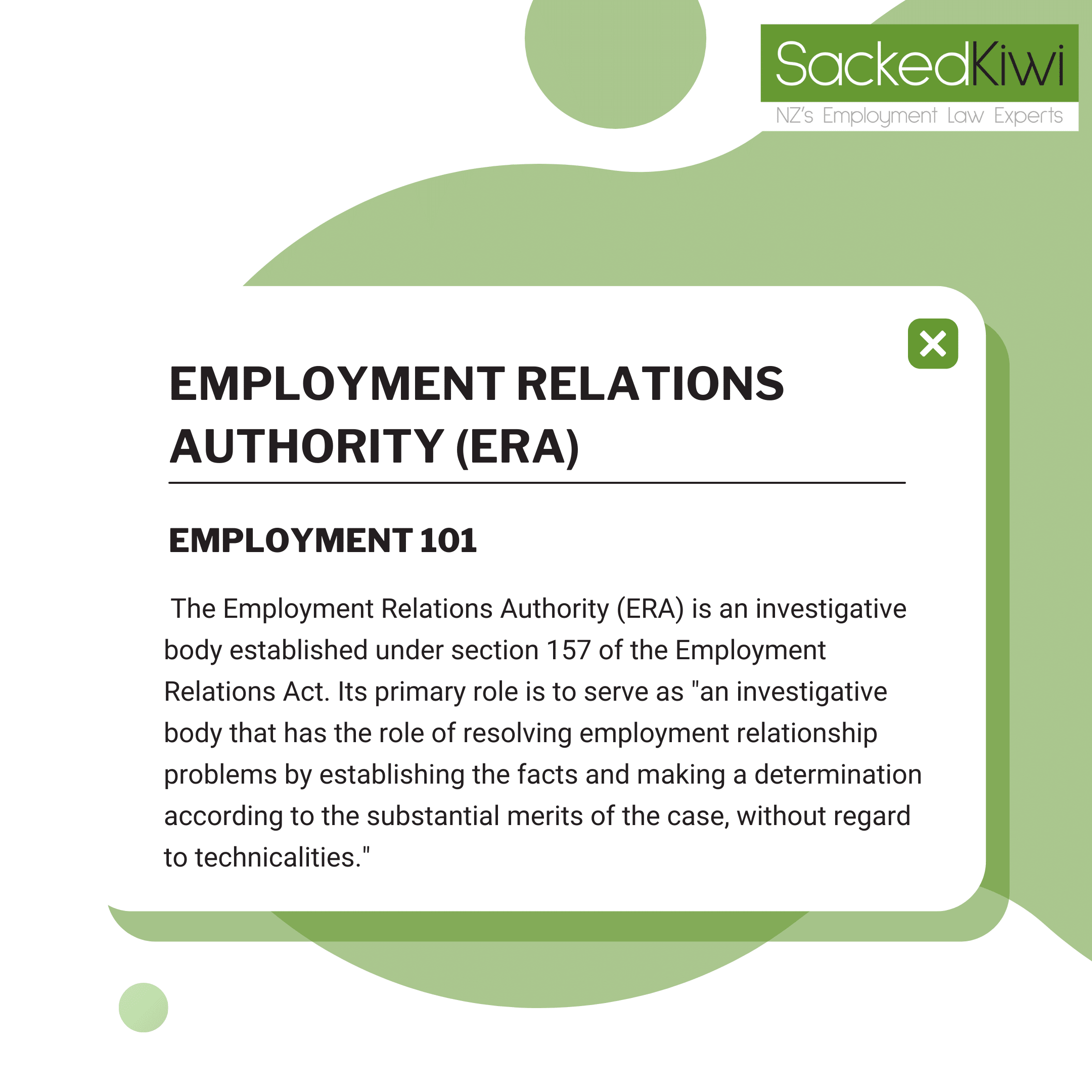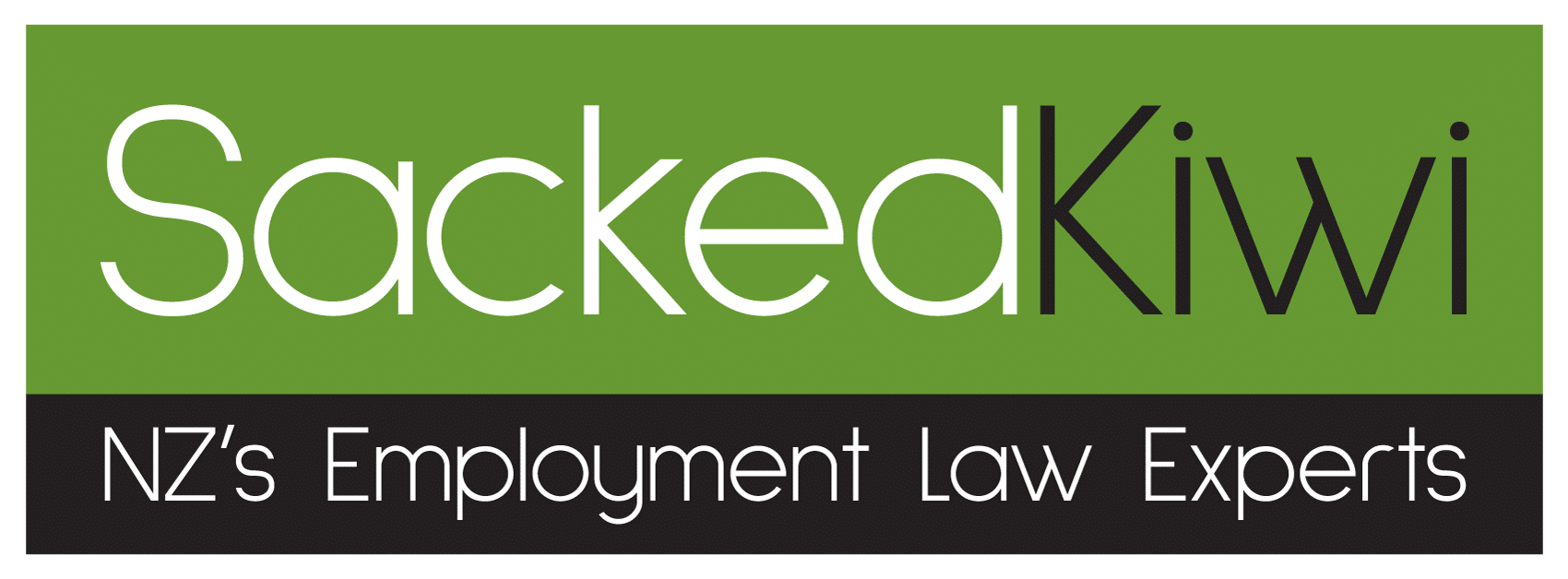
What is the Employment Relations Authority (ERA)?
The Employment Relations Authority (ERA) is an investigative body established under section 157 of the Employment Relations Act. Its primary role is to serve as “an investigative body that has the role of resolving employment relationship problems by establishing the facts and making a determination according to the substantial merits of the case, without regard to technicalities.”
The main goals of the ERA are to rule over a wide range of employment-related conflicts, including disputes over wages, working conditions, dismissals, grievances, and adherence to employment agreements.
As an investigative body is quasi-judicial as the ERA endeavours to foster equitable resolutions in employment disputes. In fact the Chief Judge of the Employment Court describes the ERA as Chief Judge described the Authority as being “low level, non-technical, and expeditious.” Its emphasis on a factual determination, free from excessive formalities, underpins its commitment to offering accessible and fair pathways for resolving employment relationship problems within New Zealand. Simply put, it strives to make employment justice easy and accessible to all.
Is the ERA like Court?
The Employment Relations Authority (ERA) is similar to court proceedings but differs in several key ways:
Format and Location
The first big difference is that the proceedings are investigation meetings, not court hearings. These meetings take place in normal meeting rooms, not courtrooms, creating a more relaxed environment.
Atmosphere
The ERA’s investigation meetings are more informal than court proceedings. Being held in a normal meeting room, it is common for participants to use first names. The ERA is led by members rather than judges, contributing to a less confrontational and more approachable process. Members understand the hesitancy people face and help facilitate a productive and supportive environment in which grievances can be heard. The member-led process of the ERA is significantly less confrontational than a traditional court setting.
Approach
Unlike a court, the ERA serves as an investigative body focused on resolving employment relationship problems. Without getting bogged down by technicalities the ERA approach emphasizes accessibility, efficiency, and fairness, making it easier significantly easier to understand proceedings.
What is the process for an ERA case?
All cases filed with the Employment Relations Authority start with submitting a personal grievance. Employees have 90 days from an alleged incident to file a grievance with the Authority. In the personal grievance process, the ERA assists in ensuring your employer engages with you through mediation and an investigative meeting.
In instances where an employer refuses to participate in the personal grievance process, owing to the jurisdiction and statutory mandate of the ERA, there is no cause for concern. The ERA’s function is designed to ensure the possibility of arriving at an equitable resolution even if the employer declines engagement. An overview of this process is below:
Mediation and Investigation:
Upon receiving the PG claim, the ERA often recommends mediation as the initial step. Mediation aims to resolve the dispute through facilitated discussions. If mediation fails or is declined, the ERA conducts an investigation, gathering information from both parties to establish facts. The Ministry of Business, Innovation and Employment (MBIE) provides key service of mediation for all cases. See our learning page on mediation for more.
Investigation Meeting:
During the investigation, the ERA may arrange an investigative meeting. Here, both parties present their cases and evidence, aiding in clarifying facts and resolving disputes. See our learning page on investigation meetings for more.
ERA Determination:
Following mediation or investigation, the ERA issues a determination based on substantial case merits. This determination is legally binding, aiming to provide a resolution to the employment dispute. See our learning page on ERA determinations for more. (Hyperlinked to Glossary Page)
Throughout this process, the ERA emphasizes fairness, encouraging constructive dialogue and evidence-based presentations. It strives to resolve grievances efficiently while ensuring equitable resolutions to all parties through a balanced and fact-based approach.
How long does taking a case to the ERA take?
The duration of a case in the ERA can vary depending on its complexity and the willingness of both parties to engage in mediation. Typically, the process can range from a few months to over a year. Initial steps, such as filing a Personal Grievance and undergoing mediation, can take several weeks, while a full investigation and determination by the ERA might extend the timeline further.
In all honesty it really depends on the waiting lists at Ministry of Business, Innovation and Employment (MBIE) and the ERA. Waiting lists and staffing situations at both government entities are the main factor in how long a case might take. As with anything these fluctuate and change over time and so does the normal length of a case.
What are the risks involved in going to the Employment Relations Authority?
Taking a case to the ERA involves several risks, including the potential for legal costs, the possibility of an unfavourable determination, and the time and emotional investment required. Additionally, if the ERA is found against you, there could be repercussions, such as having to pay the other party’s legal fees. However, the ERA’s focus on fairness and the substantial merits of the case can mitigate some risks, ensuring a balanced and just resolution.
How much does it cost to go to the ERA?
The cost of taking a case to the ERA can vary widely depending on where you seek legal advice. Initial filing fees are relatively low, but additional costs can include legal representation, preparation of evidence, and potential mediation fees. Costs can escalate if the case is complex and where you seek legal advice.
Many employment lawyers and advocates have high costs that can act as a barrier to employment justice. However, companies like Sacked Kiwi offer a No Win, No Fee contingency policy. Under this policy, cases that are likely to succeed are taken on at no cost to the client until a payout is achieved. In the event the case is lost no cost is born by the client.
There is the protentional if you apply to the ERA and your cases loses that you may need to bear the legal cost of the other party. However, the ERA aims to be an accessible body, so costs are generally lower than those associated with traditional court proceedings.
Quick Facts about the ERA (FYI’s)
ERA Overview: The Employment Relations Authority (ERA) is an investigative body established under section 157 of the Employment Relations Act to resolve employment relationship problems by establishing facts and making determinations based on substantial merits.
Jurisdiction: The ERA handles various employment-related conflicts, including disputes over wages, working conditions, dismissals, grievances, and adherence to employment agreements.
Process: The ERA process typically involves:
- Filing a Personal Grievance (PG) within 90 days of the alleged incident.
- Mediation to facilitate discussions and potentially resolve the dispute.
- An investigative meeting where both parties present their cases and evidence.
- Issuing a legally binding determination based on the substantial merits of the case.
Difference from Court: The ERA is less formal and more accessible than a traditional court:
- Investigation meetings, not court hearings.
- Meetings are held in normal meeting rooms, not courtrooms.
- Led by members, not judges.
- Informal atmosphere with participants often using first names.
- Emphasis on problem-solving rather than procedural technicalities.
Costs and Risks: Legal costs can be high, but companies like Sacked Kiwi offer a No Win, No Fee policy, taking on cases at no cost to the client until a payout is achieved. Potential risks include legal costs, unfavourable determinations, and the emotional investment required.
Duration: The duration of a case can vary from a few months to over a year, depending on complexity and engagement in mediation.
Commitment to Fairness: The ERA emphasizes fairness, accessibility, and efficiency, striving to resolve grievances through a balanced and fact-based approach.
Legal Disclaimer:
The content posted on the Sacked Kiwis website should not be considered or relied upon as legal advice or opinion. The information presented here is not intended to serve as legal guidance. Over time, laws and regulations evolve, potentially altering the accuracy of previously shared information. Updates in jurisprudence or legislation, which could happen without immediate notice, may render the legal information on this platform outdated or obsolete.
Should you need employment advice, please don’t hesitate to contact us through our toll-free hotline.

